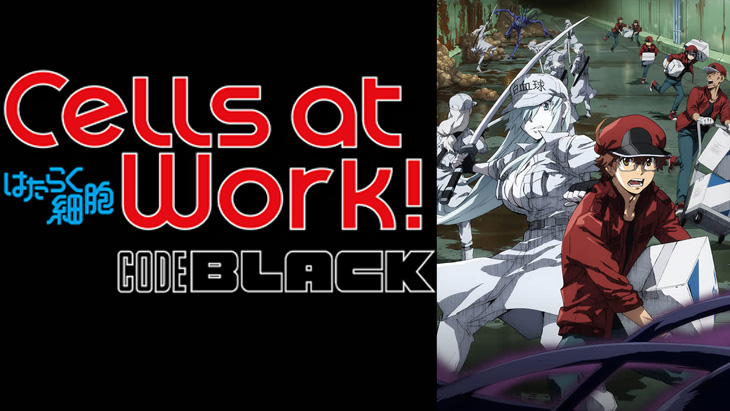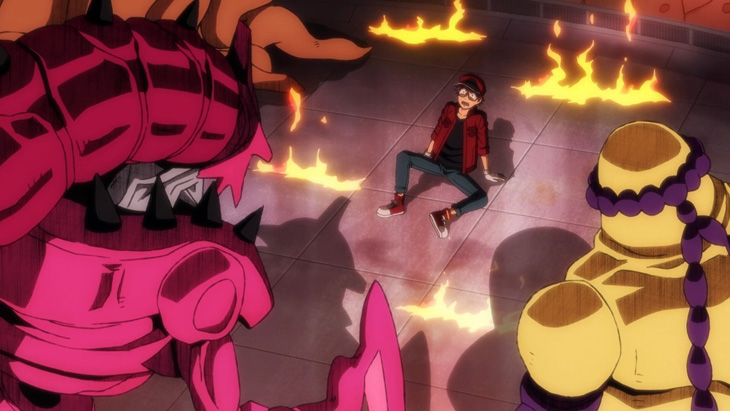
It’s been over two years since the original Cells at Work! anime premiered in 2018. The series took the Japanese trend of anthropomorphizing anything and everything and brought it to the intricacies of the human body.
As educational as it is exciting, Cells at Work! CODE BLACK takes the idea of the franchise in a different direction. While the original Cells at Work! shows a human body in normal circumstances, CODE BLACK takes place in a body in distress.
Smoking, drinking, overwork, and chronic health conditions plague the world of the cells in Cells at Work! CODE BLACK and the shift in tone from the original series gives a certain gravitas to the dire situations created by a failing body.
Cells at Work! CODE BLACK
Studios: LIDENFILMS
Publisher: Kodansha
Director: Hideyo Yamamoto
Translation: Funimation
Premiere: January 10, 2021

Cells at Work! CODE BLACK is a spinoff series of the original Cells at Work! series and is airing alongside the second season of the original. In addition to the drastic change in tone compared to Cells at Work!, CODE BLACK also features a sex-swapped cast.
While Cells at Work! predominantly features the daily lives of a rookie female red blood cell and stoic male white blood cell, CODE BLACK features a rookie male red blood cell with a stoic white blood cell.
None of the characters are given conventional names and are largely referred to by their cell type. For instance the red blood cell male lead is AA2153 and the white blood cell female lead is U-1196 and they’ll be referred to as such throughout the review.

The first episode features AA2153 beginning his first day on the job, in order to create an appropriately dramatic contrast the training video the rookie cells are made to watch shows the state of the body in better days. During an interview the chief stomach cell jovially tells the visiting red blood cells they ought to introduce themselves and be friendly when they come by the stomach.
But AA2153 is given a rude awakening. Immediately after his class is to begin their on-the-job training, they’re told by their seniors to just learn as they work and they’re given a large backlog of deliveries.
In order to further drive home the point of how the body is in such disrepair, AA2153 has a delivery to the stomach of all places. After introducing himself the chief stomach cell gets irritable and explains how the video was made in better days. There’s no longer time for niceties.

All the while AA2153 has to deal with cells in the extremities harassing him because the lack of oxygen despite it not being his fault. During all this, the narrator is explaining the different issues with the body such as Hypoxia, where bodily tissue is deprived of oxygen to focus on maintaining vital organs which is the case here.
Of course there’s self-inflicted conditions to worry about too. As opposed to the comedic tone of Cells at Work! the first episode of CODE BLACK isn’t afraid to show graphic on-screen deaths.
A vent flies open and carbon monoxide begins flooding the cholesterol clogged arteries. Soon after bacterium flood the artery and prey on the cells incapacitated by the carbon monoxide.

By the end of the first episode it’s firmly established that the body of Cells at Work! CODE BLACK is a body in a downward spiral of distress.
The series also isn’t afraid to explore more impolite functions of the human body. One episode’s main conflict is the red blood cells struggling to expand the blood vessels in order to maintain an erection in the body.
The art style for Cells at Work! CODE BLACK is distinct from most other anime series. The artwork makes use of thick lines and obvious hatch shading for shadows.

The coarse appearance however, perfectly suits the tone of the series. The show takes place in a body slowly deteriorating so it makes sense for the artwork to be coarse and look unpolished.
That isn’t to say the artwork is bad when it’s “unpolished”. As a decisive design choice by studio LIDENFILMS it works to its credit and the bold lines make the action scenes stand out.
The opening and ending themes are intentional both in their tone and with the accompanying animation. The opening theme Hashire from POLYSICS is aspirational in tone and shows AA2153 and U-1196 admirably performing their jobs by evading and defeating bacterium.

Despite their difficulties they triumph with a smile on their faces and the other cells of the body are smiling along with them. However shortly after AA2153 and it’s time for another day working to delay the inevitable for the failing body.
The ending theme Ue wo Muite Hakobou which is also from POLYSICS is ironically a cheerful marching song but more down-to-earth when it comes to the accompanying animation.
The ending shows AA2153 along with other red blood cell rookies trying their best and pans over artwork of other cells struggling and exhausted. Despite their exhaustion, they wear satisfied expressions not dissimilar to that of the opening but it’s tempered by the knowledge of the hardwork and frustration they experience during each day.

The translation for Cells at Work! CODE BLACK feels a little inconsistent, especially when compared to other titles. In the past Funimation hasn’t been shy about attempting to be creative with localizations.
Despite this, they seemed to get lazy when the workforce of the body was described in the series as a “black company” a phrase which isn’t frequently used in America. Funimation then goes on to subtitle an exclamation as “what the cell” as opposed to “what the hell”, but for what it’s worth that might be an attempt at a proper translation.
Regardless Funimation displays wildly inconsistent decision-making on phrases and terms to localize for audiences.

Ultimately Cells at Work! CODE BLACK is a distinct anime in its own right and fans of slice-of-life series that were drawn in by the original will still want to watch the more dramatic CODE BLACK.
Cells at Work! CODE BLACK manages to be original, dramatic, and surprisingly educational for such a fun series and has something for everyone. Fans of slice-of-life, drama, thrillers, and action will find something to grab their interest about Cells at Work! CODE BLACK.